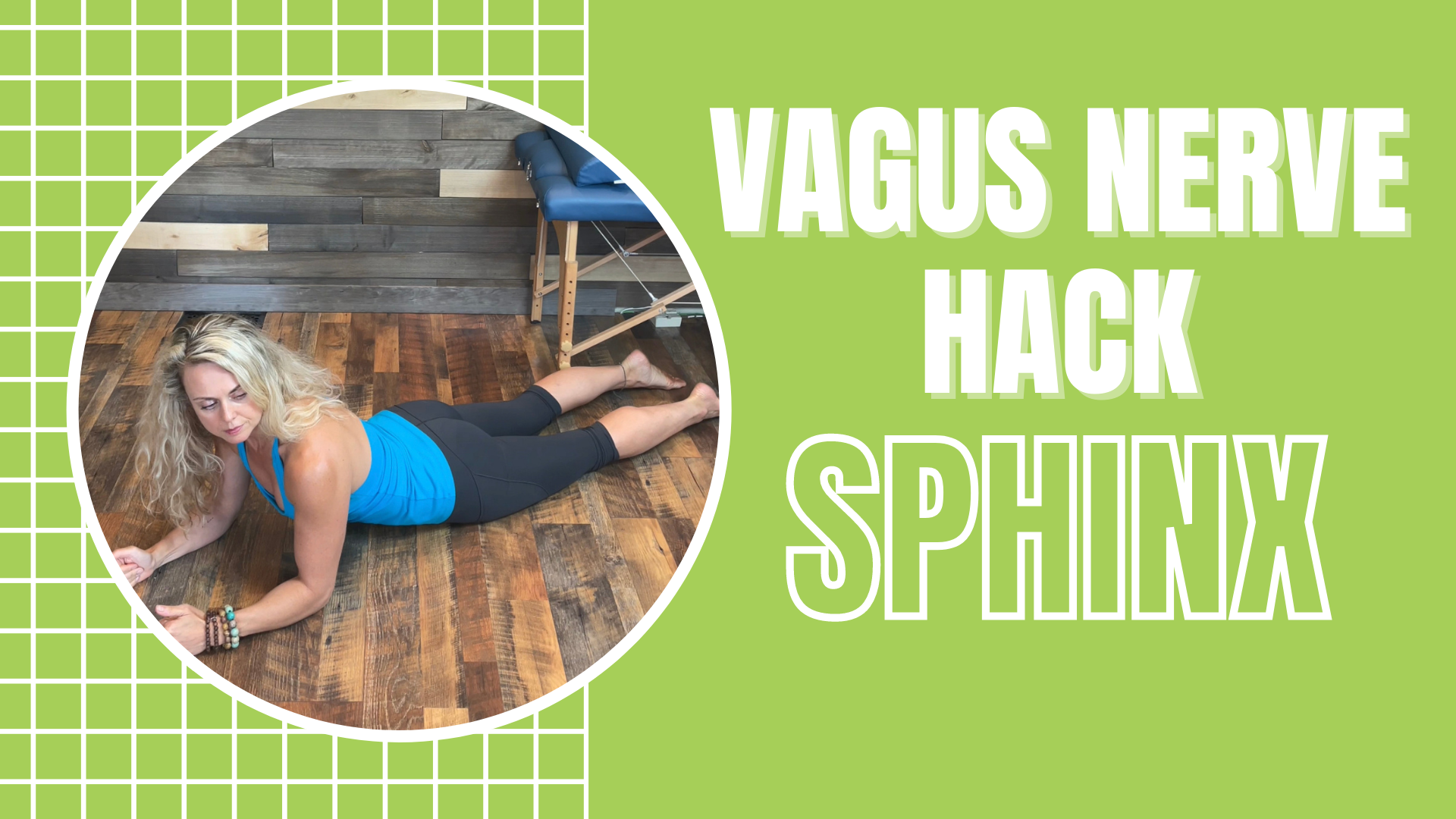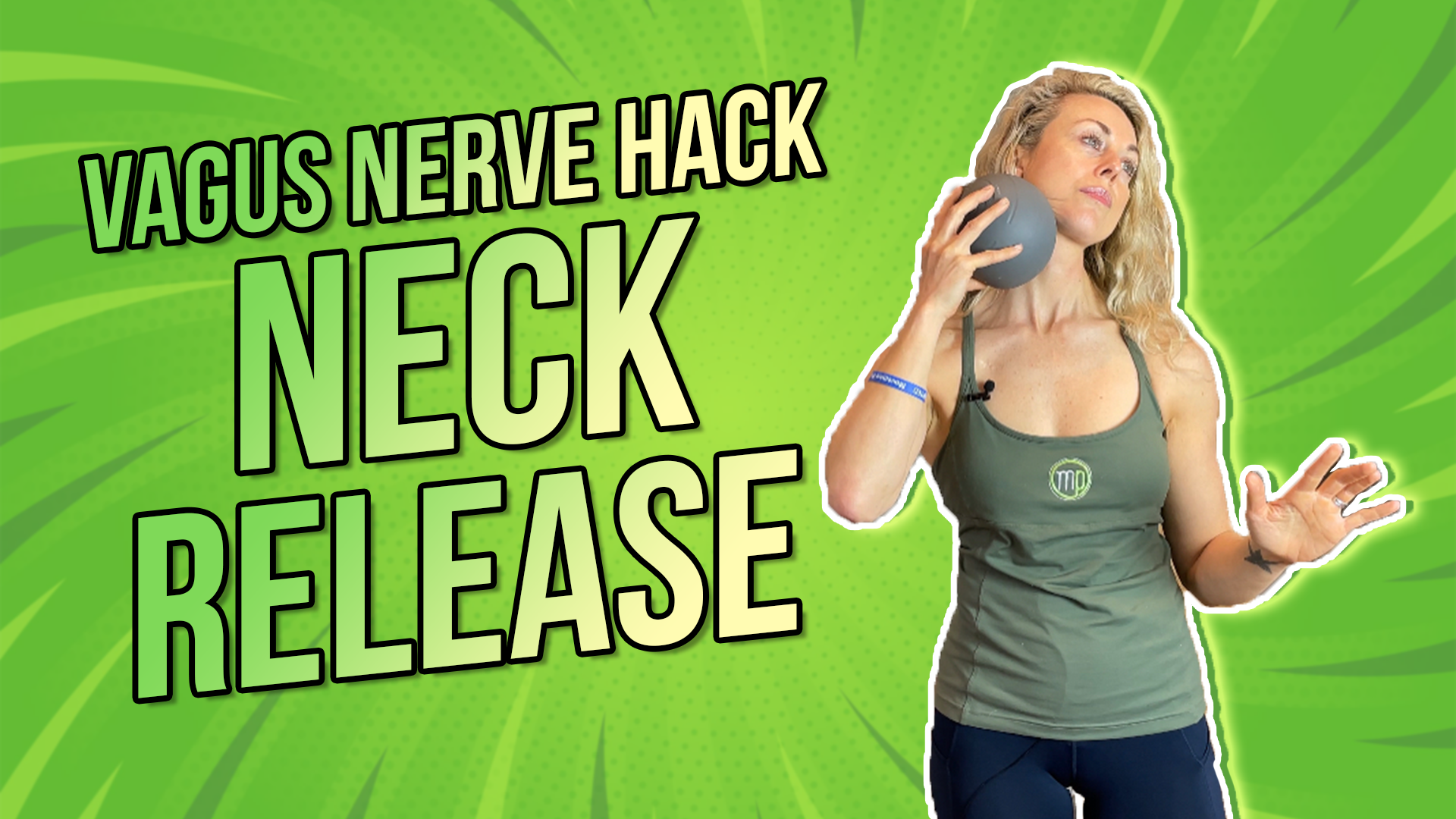The sphinx, another powerful vagus nerve hack, can improve your cervical range of motion, thereby increasing blood flow to the brainstem and stimulating the vagus nerve. Let’s briefly review the anatomy, how to perform the exercise, and the implications that it will have for you. Please make sure to check out some of our other vagus nerve hack videos on YouTube so you can explore what works best for you.
Rather watch or listen than read?
Anatomy
In the meantime, let’s review the vagus nerve. Remember, it is the 10th cranial nerve and it is a paired nerve. It originates from the brainstem, exits anteriorly, and innervates muscles of the throat, heart, digestive tract, and is involved in all of our autonomic functions.
If we have forward head posture and limited cervical range of motion, our cranial nerves are going to be impacted since they exit from the brainstem. We need optimal cranial nerve function so that we can be in a state of social engagement. This means that we are connected, joyful, mindful, and/or grounded. It involves muscles of the face or facial expressions. Again, if our range of motion is limited, then that can impact the functionality of these nerves and thereby how we interact with the world.
Before you begin the exercise I would recommend checking your range of motion. You can start by keeping your head in a stacked position over your body and look all the way to the right and left. How does it feel? Is there pain and/or restriction?
You should be able to get your nose over towards your shoulder while keeping your eyes level, so make sure not to side bend when you perform this.
How To Perform
To perform this exercise, start by lying on your stomach and then prop yourself up to your elbows. From here starting with your head centered, lift your pubic bone off the ground, lift your head gently, and then slowly rotate to the left, holding that position for 30 seconds. Next, come back to the center, and then move to the right and hold that for 30 seconds.
Now that you’ve performed the exercise, you can reassess your range of motion to see how that feels. If it feels better, then that exercise was meant to relax or stimulate cranial nerve XI, the accessory nerve. This will relax your SCM muscle as well as your trapezius muscles. If it didn’t, then that means that there is another problem in another one of the cranial nerves. Just know that there are other exercises that may be more appropriate for you.
This is a developmental position, something we did as babies. When we prop up onto our forearms, it ignites a postural reflex. It is also optimal for reflexive stability. This is a great position, movement, and posture to work from, and even exercise from. If you have a stiff neck, or you experience migraines on a regular basis, then this is a powerful exercise to perform. Make sure to do it as often as you need to help with your symptoms.


